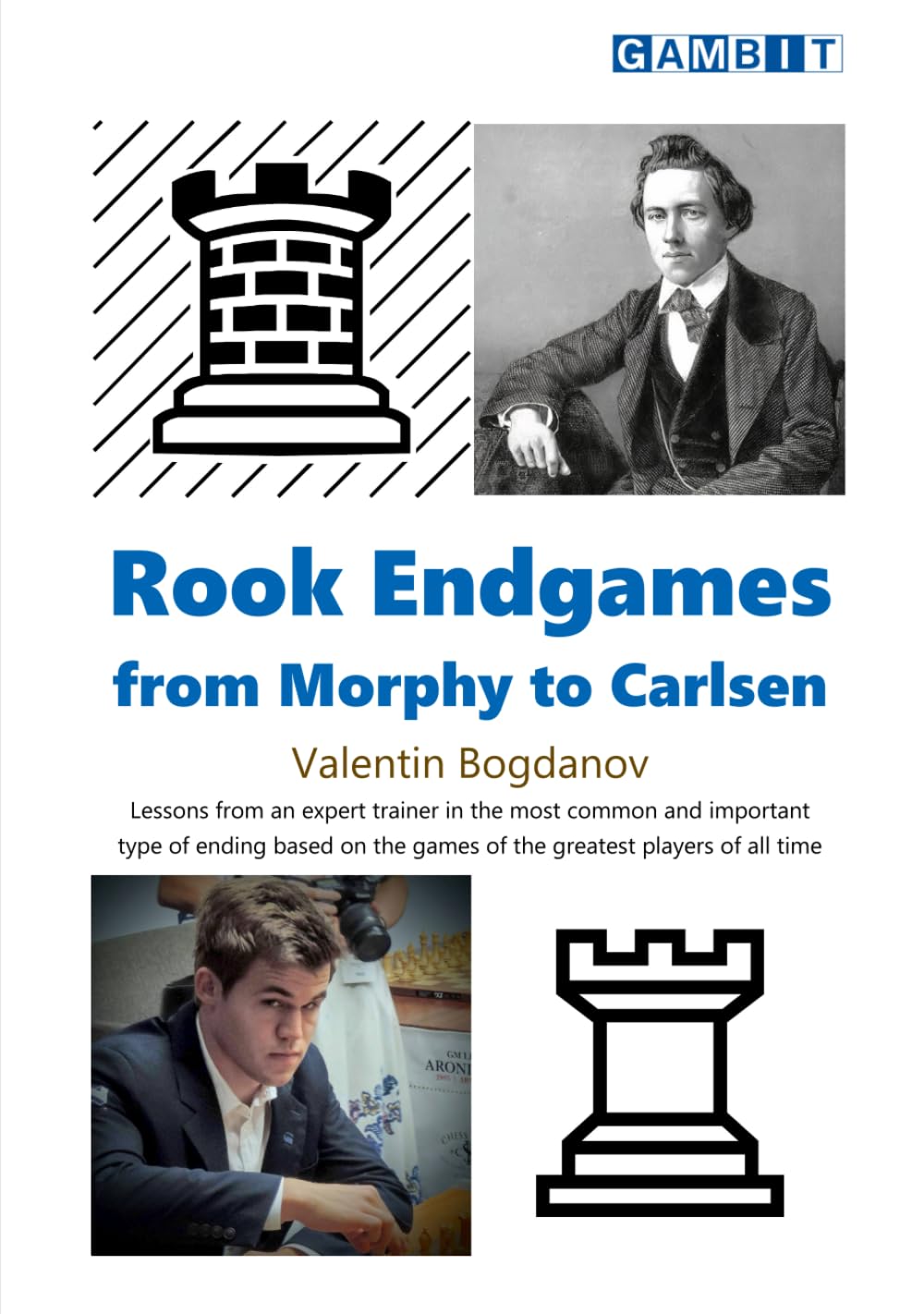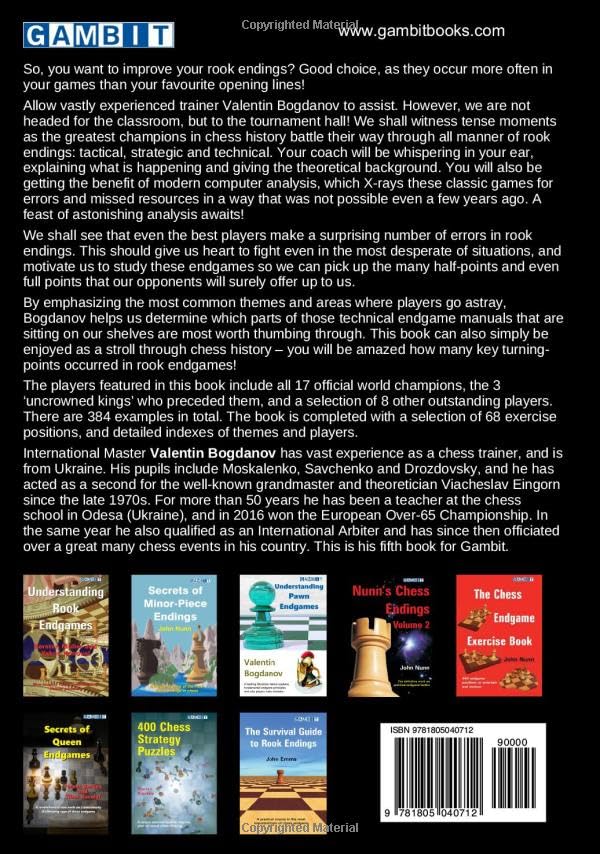Rook Endgames from Morphy to Carlsen: Valentin Bogdanov
From the publisher:
“So, you want to improve your rook endings? Good choice, as they occur more often in your games than your favourite opening lines!
Allow vastly experienced trainer Valentin Bogdanov to assist. However, we are not headed for the classroom, but to the tournament hall! We shall witness tense moments as the greatest champions in chess history battle their way through all manner of rook endings: tactical, strategic and technical. Your coach will be whispering in your ear, explaining what is happening and giving the theoretical background. You will also be getting the benefit of modern computer analysis, which X-rays these classic games for errors and missed resources in a way that was not possible even a few years ago. A feast of astonishing analysis awaits!
We shall see that even the best players make a surprising number of errors in rook endings. This should give us heart to fight even in the most desperate of situations, and motivate us to study these endgames so we can pick up the many half-points and even full points that our opponents will surely offer up to us.
By emphasizing the most common themes and areas where players go astray, Bogdanov helps us determine which parts of those technical endgame manuals that are sitting on our shelves are most worth thumbing through. This book can also simply be enjoyed as a stroll through chess history – you will be amazed how many key turning-points occurred in rook endgames!
The players featured in this book include all 17 official world champions, the 3 ‘uncrowned kings’ who preceded them, and a selection of 8 other outstanding players. There are 384 examples in total. The book is completed with a selection of 68 exercise positions, and detailed indexes of themes and players.”
About the author, Valentin Bogdanov
“International Master Valentin Bogdanov has vast experience as a chess trainer, and is from Ukraine. His pupils include Moskalenko, Savchenko and Drozdovsky, and he has acted as a second for the well-known grandmaster and theoretician Viacheslav Eingorn since the late 1970s. For more than 50 years he has been a teacher at the chess school in Odesa (Ukraine), and in 2016 won the European Over-65 Championship. In the same year he also qualified as an International Arbiter and has since then officiated over a great many chess events in his country. This is his fifth book for Gambit.”
Here, on YouTube John Nunn gives the reader an introduction to the book:
and, if that wasn’t good enough for you we have this sample of the content.
This book is an excellent publication on rook endgames. It is packed full of an instructive examples from practical games which makes the material more accessible than a book of purely theoretical positions. There are a lot of fresh examples that are new to the reviewer which makes the book particularly novel. The book is probably aimed at 2000+ players although any aspiring player would glean lots of useful guidelines on playing rook endings from this tome. There is an excellent “Index Of Themes” at the back.
The reviewer will show six examples from the book.
Position 10

There are many positions with R+2P v R with a and c pawns that are drawn. This position is winning with care. Steinitz inexplicably played 81.a7+? believing that seizing c7 for the king would win. 81…Kxa7! 82.Kc7 Rh1! 83.c6 Rh7+ drawing with flank checks.
The natural 81.Kd7! wins easily, for example 81…Rh1 82.c6 Rh7+ 83.Kd6 Rh6+ 84.Kc5 Rh1 85.Kb6 Rb1+ 86.Rb5
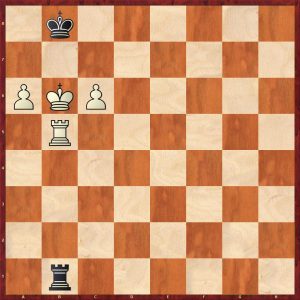
86…Ra1 87.c7+ Kc8 88.a7 Ra2 89.a8Q Rxa8 90.Rd5 winning
Position 100
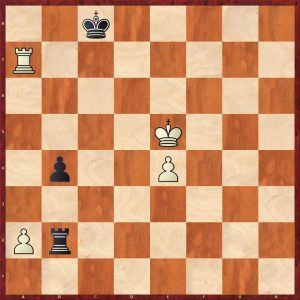
Black hurries to force a drawn R+P v R endgame, but is mistaken.
52…b3? 52…Rh2 or Re2 is much better 53.axb3! Rxb3 54.Kd6 Rd3+
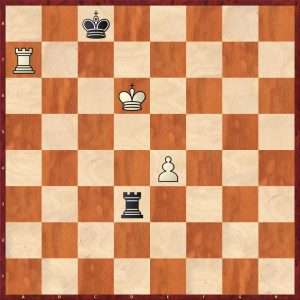
White played 55.Ke6? throwing away the win, 55.Ke7! wins controlling d8, after 55…Rh3 intending flank checks 56.Ra4 Rh7+ 57.Kf6 Rh6+ (57..Kd8 58.Ra8+) 58.Kg5
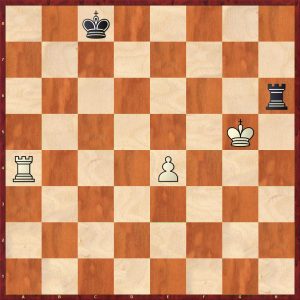
58…Rd6 otherwise, white will cut black’s king off with Rd4 59.e5 Rd1 60.Kf6! winning because black’s rook can only work on the short side as his king is on the long side

Position 116
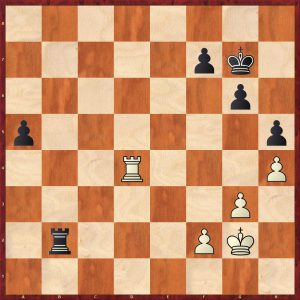
This position is deceptive 47…Rb6 (47…Rb5 allows 48.Rd6 and the rook gets behind the pawn and white probably draws) 48.Ra4 Ra6? for once placing the rook behind the pawn does not win as the a-pawn is only on the fourth rank! 48…Rb5! 49.Rc4 Kf6! and black’s active king wins the game as it can support the a-pawn quickly
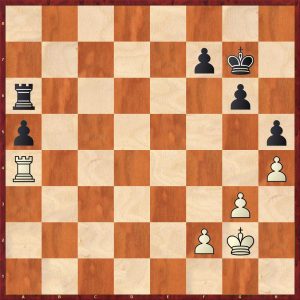
49.Kf3? natural but 49.f3! and 50.g4! seeking counterplay draws 49…Kf6 50.Ke4 Ke6 natural, but 50…Re6+ and Re5 activating the rook wins 51.f3! white advances the kingside pawns to get counterplay which draws with accurate play.

51…Ra7 52.g4 Ra6 53.Kf4 f6 54.Ke4 f5+ 55.gxf5+ gxf5+ 56.Kf4 Kf6 57.Ke3 Ke5 58.Kd3 Rd6+ 59.Ke3 Rd5 60.Rc4 Rb5 61.Ra4! Kd5 62.Ra1 Kc4
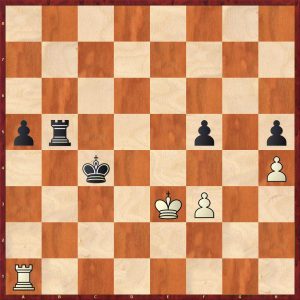
White has defended well but now makes a fatal mistake 63.Rc1+ draws as the black king has to retreat, 63.Kf4? Kc3! The a-pawn is too strong 64.Kg5 Kb2 65.Re1 f4+! 66.Kxf4 a4! 67.Ke4 a3 68.f4 a2 winning
Position 131
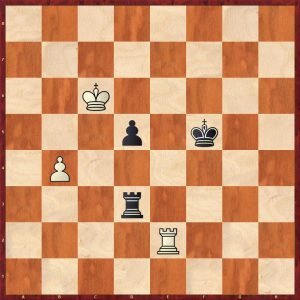
Bisguier had an appalling record against Fischer, gaining a single win and a single draw against the young Bobby. He lost the other thirteen games including this one.
White has an edge as black’s king is a long way from the b-pawn, but he can draw with careful defence. 70…d4? (Sloppy, black can draw easily with 70…Rb3! 71.Kc5 Rb1 72.Rd2 Ke6!) 71.Kd5! a clever switchback probably missed by Black 71…Rd1 72.Rf2+! The point forcing the black king further away 72…Kg4
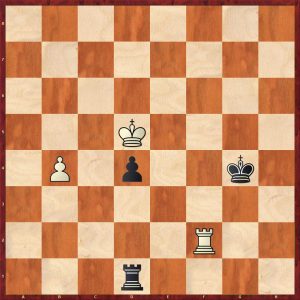
Now Fischer goes astray, 73.Kc4? White can win with 73.b5! Kg3 (73…Rb1 74.Kc4 d3 75.Rd2! Rc1+ 76.Kc5! Rc1+ 77.Kb6 Rc3 78.Ka5 and Black loses the d-pawn and the game) 74.Rb2! winning
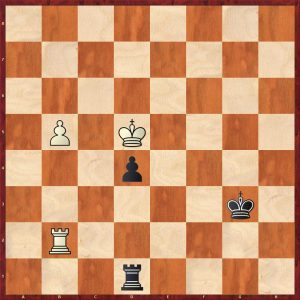
After 73.Kc4? played in the game:
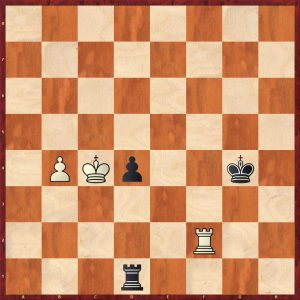
Bisguier came up with a faulty plan 73…d3? 74.Kc3! winning the pawn after Rd2 and as the Black king is cut off by two files, the ensuing R+P v P is easily won
73…Kg3! draws 74.Rf5 (74.Rb2 Kf4 75.b5 Ke3 draws), 74…d3! 75.Kc3 d2! 76.b5 Kg4! 77. Rd5 Kf4! draws as capturing the d2-pawn allows a drawn K+P v K ending.
So much play with only 6 pieces!
Position 200

Aronian played the cunning waiting move 73.Rd6 testing the young Magnus. This trap is also covered in Rook Endings by Levenfish & Smyslov. Black played the natural check 73…Ra7+? which loses. After 74.Ke8! Carlsen resigned. Only 73…Kg6! draws.
Position 293

White won here using a famous systematic manoeuvre called Lasker’s steps. 67.Rxc2? throws away the win as Black’s flank checks with the rook draw, so 67.f7! Rg4+ 68.Kh8 Rf4 69.Rc6+ Kh5 70.Kg7 Rg4+ 71.Kh7 Rf4 72.Rc5+ Kh4 73.Kg7 Rg4+ 74.Kf6 Rf4+ 75.Ke6 Re4+ 76.Kf5 Re2 77.Kg6 Rg2+ 78.Kh6 Rf2 79.Rc4+ Kh3 80.Kg6 Rg2+ 81.Kh5 Rf2 82.Rc3+ Kh2 83.Rxc2! queening the pawn. Now White just has to win Q v R.
This short review cannot really do justice to this book. I do highly recommend it. The graded exercises at the end are tricky , even the so called easy ones!
FM Richard Webb, Chineham, Hampshire, 6th July 2024

Book Details :
- Hardcover : 344 pages
- Publisher: Gambit Publications (1 April 2024)
- Language: English
- ISBN-10: 1805040715
- ISBN-13: 978-1805040712
- Product Dimensions: 17.78 x 2.24 x 25.4 cm
Official web site of Gambit Publications Ltd.
